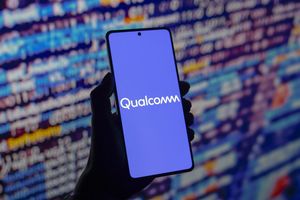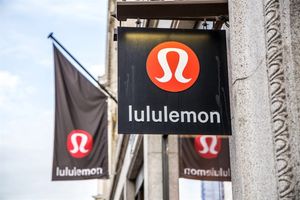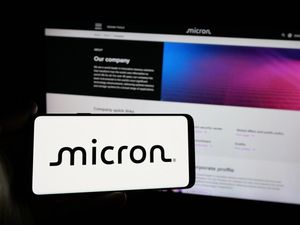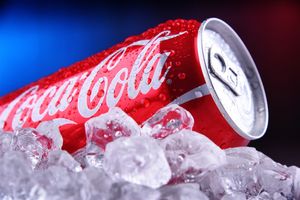The "Radioimmunoassay Market - Diagnostic Applications & Forecast 2025-2033" report has been added to ResearchAndMarkets.com's offering.
Global Radioimmunoassay Market size is anticipated to grow from US$ 710 Million in 2024 to US$ 1.12 billion in 2033 at a CAGR of 5.21%
Increased research activities in endocrinology, oncology, and infectious disease diagnosis, and more extensive application of RIA in both developed and emerging countries, are some other factors driving the growth of the market.
RIA has transformed medical diagnosis from its inception in the 1960s, particularly in endocrinology, where it permitted accurate quantitation of hormones including insulin, thyroid hormones, and cortisol. Even though it has been increasingly displaced by non-radioactive counterparts such as ELISA on account of safety and handling issues, RIA is still widely used in certain clinical and research applications on account of its high sensitivity and specificity. It remains to be extensively applied in specialized laboratories for detecting drugs, hormones, and even tumor markers, keeping its use relevant in medical and pharmaceutical research.
Growth Drivers in the Radioimmunoassay Market
Increased Demand for Early and Precise Diagnosis of Diseases
The growing incidence of infectious and chronic conditions has boosted the demand for precise diagnostic products. Radioimmunoassay (RIA) is extremely useful in the detection of low doses of drugs, hormones, and antigens, and is therefore crucial in the diagnosis of thyroid conditions, certain malignancies, and endocrine disorders. As medical systems are prioritizing preventive therapy, RIA is becoming more commonly utilized by hospitals and clinical laboratories to enhance the health outcomes of patients by facilitating faster diagnosis.
Technological Improvement in RIA Kits and Automation
Technology is the key driving force in the radioimmunoassay market. New-generation RIA kits are more user-friendly, precise, and automated, which minimizes human error and maximizes workflow efficiency. Technological advancements, for example, robotic liquid handling systems, enable high-throughput testing with reduced human intervention. Such enhancements make RIA accessible to more labs, including those in constrained environments.
Additionally, advancements in radioisotope safety and handling procedures are making the technology safer and more environmentally friendly, which spurs increased use in both industrialized and developing healthcare systems. Another key driver of the growth of the radioimmunoassay market is the very high sensitivity and specificity of RIA methods in contrast to most other immunoassays.
Growing Applications in Pharmaceutical and Biomedical Research
RIA is an important component in drug development, pharmacokinetics, and clinical trials. Pharmaceutical firms apply it to quantify drug levels and biological effects for the assurance of efficacy and safety. Its sensitivity enables scientists to track low-dose responses and perform thorough biomarker studies.
With heightened investment in life science research, especially in the developing countries, demand for RIA in academic and commercial R&D is on the increase. Moreover, growth of personalized medicine and targeted therapies has amplified the requirement of accurate biomolecular measurement tools, further fueling RIA use in clinical as well as non-clinical research settings.
Challenges in the Radioimmunoassay Market
Strict Regulatory Controls and Radioactive Waste Management
One of the main hurdles for the RIA market is regulatory concern over the application and disposal of radioactive sources. Because of the inherent danger of radioisotopes, laboratories are required to meet stringent safety requirements and environmental regulations, which can be time-consuming and expensive. Overregulation could hold up product approvals or restrict use in some areas.
Additionally, appropriate radioactive waste disposal involves trained staff and dedicated facilities, which might not be present in every healthcare or research environment. Such challenges will discourage new entrants and restrict the growth of RIA technologies within less-developed economies.
Competition from Non-Radioactive Alternatives
The availability of non-radioactive immunoassay methods like ELISA (enzyme-linked immunosorbent assay) and chemiluminescent immunoassays threatens the RIA market extensively. These alternatives provide comparable sensitivity without the hassles of radioactive handling, storage, or waste disposal.
With improving technology, these newer techniques are becoming more cost-efficient, gaining general acceptance, and easier to utilize in clinical practice. Laboratories and hospitals tend to favor non-radioactive techniques because of their lower risk for safety and easier compliance. This transition in preference is increasingly diminishing demand for conventional RIA, particularly in countries with harsh regulatory regimes.
Key Players Analysis: Overview, Key Persons, Product Analysis, Recent Developments, Revenue
- Danaher (Beckman Coulter, Inc.)
- Berthold Technologies GmbH & Co. KG
- DIAsource ImmunoAssays SA
- BioCheck, Inc. (DRG International Inc.)
- IBL International
- Merck KGaA
- Abbexa
- Institute of Isotopes Co. Ltd.
- Marin Biologic Laboratories, Inc.
- Demeditec Diagnostics GmbH
Key Attributes:
| Report Attribute | Details |
| No. of Pages | 200 |
| Forecast Period | 2024 - 2033 |
| Estimated Market Value (USD) in 2024 | $710 Million |
| Forecasted Market Value (USD) by 2033 | $1120 Million |
| Compound Annual Growth Rate | 5.2% |
| Regions Covered | Global |
Key Topics Covered:
1. Introduction
2. Research & Methodology
2.1 Data Source
2.1.1 Primary Sources
2.1.2 Secondary Sources
2.2 Research Approach
2.2.1 Top-Down Approach
2.2.2 Bottom-Up Approach
2.3 Forecast Projection Methodology
3. Executive Summary
4. Market Dynamics
4.1 Growth Drivers
4.2 Challenges
5. Global Radioimmunoassay Market
5.1 Historical Market Trends
5.2 Market Forecast
6. Market Share Analysis
6.1 By Product
6.2 By Application
6.3 By End User
6.4 By Countries
7. Product
7.1 Analyzers
7.2 Reagents and Kits
8. Application
8.1 Research
8.2 Clinical Diagnostics
9. End User
9.1 Hospitals
9.2 Clinical Diagnostic Laboratories
9.3 Pharmaceutical Industries
9.4 Other End Users
10. Countries
10.1 North America
10.2 Europe
10.3 Asia Pacific
10.4 Latin America
10.5 Middle East & Africa
11. Value Chain Analysis
12. Porter's Five Forces Analysis
12.1 Bargaining Power of Buyers
12.2 Bargaining Power of Suppliers
12.3 Degree of Competition
12.4 Threat of New Entrants
12.5 Threat of Substitutes
13. SWOT Analysis
13.1 Strength
13.2 Weakness
13.3 Opportunity
13.4 Threats
14. Pricing Benchmark Analysis
14.1 Danaher (Beckman Coulter, Inc.)
14.2 Berthold Technologies GmbH & Co. KG
14.3 DIAsource ImmunoAssays SA
14.4 BioCheck, Inc. (DRG International Inc.)
14.5 IBL International
14.6 Merck KGaA
14.7 Abbexa
14.8 Institute of Isotopes Co. Ltd.
14.9 Marin Biologic Laboratories, Inc.
14.10 Demeditec Diagnostics GmbH
15. Key Players Analysis
For more information about this report visit https://www.researchandmarkets.com/r/sj94th
About ResearchAndMarkets.com
ResearchAndMarkets.com is the world's leading source for international market research reports and market data. We provide you with the latest data on international and regional markets, key industries, the top companies, new products and the latest trends.
View source version on businesswire.com: https://www.businesswire.com/news/home/20250910042443/en/
Contacts
ResearchAndMarkets.com
Laura Wood, Senior Press Manager
press@researchandmarkets.com
For E.S.T Office Hours Call 1-917-300-0470
For U.S./ CAN Toll Free Call 1-800-526-8630
For GMT Office Hours Call +353-1-416-8900






